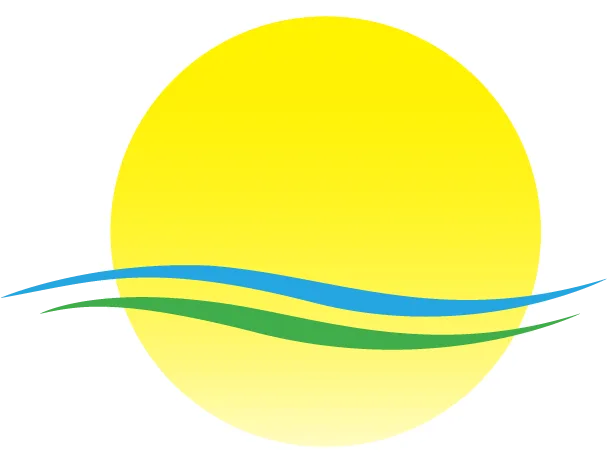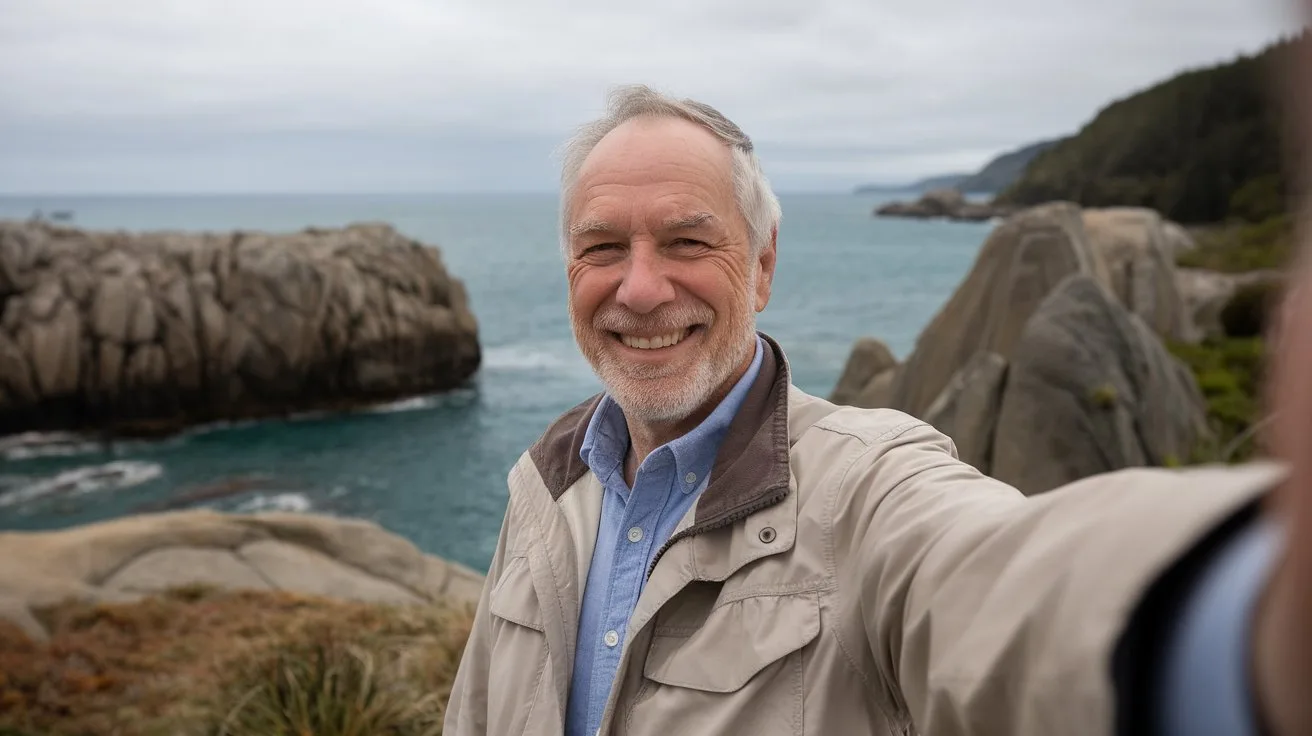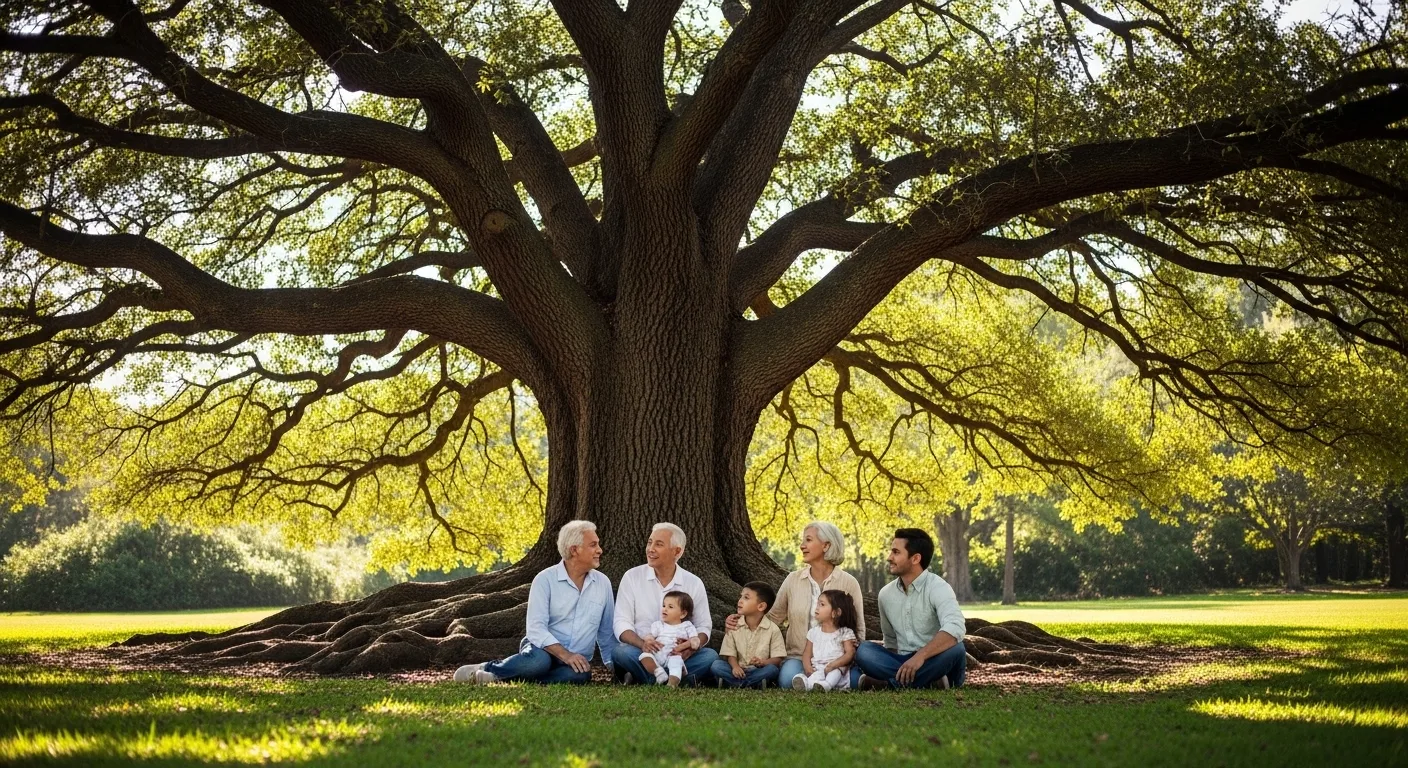New Zealand is a dream destination for travelers of all ages, and seniors in particular can find a wealth of comfortable and enriching experiences throughout the country. From its awe-inspiring landscapes and friendly locals to its vibrant Māori culture, New Zealand offers a blend of natural beauty, cultural immersion, and easy-to-navigate amenities. In this article, we’ll explore everything you need to know about planning a senior-friendly trip to Aotearoa, the Land of the Long White Cloud.
Introduction to the Destination
New Zealand is composed of two main islands—the North Island and the South Island—along with numerous smaller islands. It is known for its breathtaking scenery, which includes some absolutely stunning mountain ranges, rolling green hills, and pristine coastlines. Māori culture is deeply woven into the nation’s identity, and senior travelers can engage in cultural performances, visit marae (Māori meeting grounds), and learn about traditional arts such as carving and weaving.
The country’s appeal for seniors lies in its accessibility and range of comfortable travel options. With high-quality healthcare, relatively stable weather, and an excellent tourism infrastructure, New Zealand is consistently ranked as a safe, clean, and friendly place to visit.
Seasonal Information
Warm days and mild nights with temperatures ranging from 20-30°C (68-86°F) in most areas. Northern regions can reach 25-30°C, while mountainous areas remain cooler at 15-25°C. This is the peak tourist season, ideal for outdoor activities such as hiking or boat tours. It can be busy, and accommodations often fill up quickly.
Pleasant temperatures ranging from 15-25°C (59-77°F), gradually cooling as the season progresses. March typically sees averages of 18-25°C, while May temperatures drop to 12-18°C. Fewer crowds and beautiful fall foliage (particularly in the South Island around Arrowtown and Queenstown). This is an excellent time for leisurely exploration.
Cooler temperatures ranging from 5-15°C (41-59°F) in most areas, with temperatures below freezing in mountainous regions. South Island alpine areas can drop to -10°C (14°F) while North Island coastal cities like Auckland maintain milder temperatures of 10-15°C (50-59°F). Snow in the mountain regions makes this season perfect for scenic train rides and enjoying hot pools.
Moderate temperatures ranging from 12-20°C (54-68°F), gradually warming as the season progresses. September starts with 12-15°C averages, while November can reach 15-20°C. Blossoming landscapes and fewer visitors make this an excellent season for nature walks and scenic drives.
For most senior travelers, autumn (March–May) or spring (September–November) offer comfortable weather and fewer crowds, making it easier to explore at your own pace.
Arrival and Transportation
Airports
Most international flights arrive at Auckland Airport (North Island) or Christchurch Airport (South Island). Auckland Airport handles the majority of international arrivals, offering a wide range of services such as mobility assistance and accessible facilities.
Other Entry Points
Wellington Airport (on the southern tip of the North Island) also hosts some international routes, as does Queenstown Airport in the South Island for flights from Australia. If you arrive in one city and wish to travel further, you can connect to smaller regional airports across the country.
Train Stations
New Zealand’s main long-distance trains are operated by The Great Journeys of New Zealand (formerly KiwiRail Scenic Journeys). Principal routes include:
- Northern Explorer (Auckland – Wellington)
- Coastal Pacific (Picton – Christchurch)
- TranzAlpine (Christchurch – Greymouth)
While these scenic trains don’t function as a comprehensive transport network, they are fantastic for sightseeing and can be a comfortable way for seniors to take in the country’s landscapes.
Arriving at Auckland Airport (North Island)
Overview
- Airport Location: Approximately 20 km (12 miles) south of Auckland’s city center.
- Why Fly Here? This is New Zealand’s largest and busiest airport, so it typically offers the most flight options and frequent international arrivals.
Transportation from Auckland Airport
- SkyBus: Direct service between the airport and the central city (Britomart Transport Centre) with wheelchair-accessible buses.
- Taxi or Rideshare: Typically 25–40 minutes to downtown (longer at peak times). Make sure to use the official taxi ranks or authorized rideshare pickup area outside the terminal.
- Shuttles & Private Transfers: Great option for small groups or travelers with mobility needs who prefer door-to-door service.
Where to Stay
- Auckland CBD (Central Business District)
- Close to major attractions like the Sky Tower, Auckland Art Gallery, and Viaduct Harbour.
- Plenty of hotels with accessible rooms.
- Viaduct Harbour & Wynyard Quarter
- Scenic waterfront district with vibrant dining and entertainment options.
- Many upscale hotels and serviced apartments offering harbor views.
- Parnell & Newmarket
- Quieter neighborhoods near boutique shops, museums, and gardens.
- Look for heritage-style hotels or smaller lodges that often have personal touches.
What to Do
- Sky Tower: Take the elevator for panoramic views over the city; accessible observation deck.
- Auckland War Memorial Museum: Explore New Zealand’s history and culture; accessible exhibits and mobility-friendly entry.
- Ferry to Devonport: A short ferry ride across the harbor to a charming seaside village.
- Day Trips: Hobbiton Movie Set (2.5 hours away), Waitomo Glowworm Caves (2.5 hours away), or Rotorua (3 hours away) to experience geothermal wonders and Māori culture.
Arriving at Christchurch Airport (South Island)
Overview
- Airport Location: Approximately 12 km (7.5 miles) northwest of Christchurch city center.
- Why Fly Here? Christchurch is the South Island’s largest city and a major gateway to scenic South Island regions like Canterbury, the West Coast, and beyond.
Transportation from Christchurch Airport
- Public Bus (Metro Bus): Accessible city buses (Purple and Number 29 routes) connect the airport to central Christchurch.
- Taxi or Rideshare: Generally 15–20 minutes into the city center, depending on traffic.
- Rental Cars: Good option if you plan to explore Canterbury or drive to other South Island destinations.
Where to Stay
- Central Christchurch
- Close to Cathedral Square, Riverside Market, and the Avon River.
- Modern hotels and refurbished heritage buildings, many with accessible features.
- Merivale & Fendalton
- Leafy, upscale neighborhoods near eateries and shops, with easy bus access to downtown.
- Near Hagley Park
- Scenic area with large green spaces, ideal if you enjoy quiet surroundings and park walks.
What to Do
- Explore the City Center: Visit the Transitional “Cardboard” Cathedral and stroll around the re-developed city core.
- Punting on the Avon: Enjoy a relaxed ride on the Avon River; check with operators for accessible boarding options.
- Botanic Gardens: Accessible pathways, beautiful flora, and a relaxed atmosphere.
- TranzAlpine Train: One of the most scenic train journeys in the world, traveling from Christchurch across the Southern Alps to Greymouth (West Coast). Ideal for sightseeing without the need to drive.
Arriving at Wellington Airport (North Island)
Overview
- Airport Location: About 8 km (5 miles) from Wellington city center on the southern tip of the North Island.
- Why Fly Here? Wellington is New Zealand’s capital, known for its vibrant arts scene, waterfront, and political heart (the Beehive Parliament building).
Transportation from Wellington Airport
- Metlink Airport Express Bus (Route 2 & 91): Frequent service to Wellington’s central business district. Buses generally have wheelchair ramps and priority seating.
- Taxi or Rideshare: Typically 15–20 minutes into central Wellington.
- Airport Shuttles: Good for door-to-door service in Wellington’s often hilly neighborhoods.
Where to Stay
- Wellington CBD / Waterfront
- Easy access to Te Papa (Museum of New Zealand), the cable car, and waterfront promenade.
- Hotels often have amenities designed for both business and leisure travelers.
- Courtenay Place / Cuba Street
- Lively area with cafés, restaurants, and theaters.
- Perfect for those wanting culture, dining, and nightlife close by.
- Oriental Bay
- A scenic spot near the beach, offering great harbor views and a relaxed atmosphere.
What to Do
- Te Papa (Museum of New Zealand): Free entry (special exhibits might cost extra), fully accessible with elevators and ramps.
- Wellington Cable Car: Short, iconic ride from Lambton Quay up to Kelburn for fantastic city views.
- Zealandia: An eco-sanctuary close to downtown with barrier-free paths (though some areas are steeper; mobility scooters available for rent).
- Weta Workshop: Tour the special effects facility behind The Lord of the Rings and Avatar, in Miramar (short bus or taxi ride from central Wellington).
Arriving at Queenstown Airport (South Island)
Overview
- Airport Location: Located in Frankton, about 8 km (5 miles) east of central Queenstown.
- Why Fly Here? Queenstown is known as the adventure capital of New Zealand, but it also offers stunning scenery, lakeside strolls, and plenty of easy-going excursions for visitors of all ages.
Transportation from Queenstown Airport
- Public Bus: Orbus services run between the airport and Queenstown town center. Buses are modern with low floors for easier boarding.
- Taxi or Rideshare: About a 10–15-minute journey into town.
- Rental Cars: Widely used for exploring the broader Otago region or driving to Wanaka, Te Anau, or Milford Sound.
Where to Stay
- Central Queenstown
- Easy walking access to the waterfront, restaurants, and tour operators.
- Many hotels, serviced apartments, and lodges with various price ranges and accessibility options.
- Fernhill
- Elevated neighborhood with lake views. Some steep streets but often quieter than central Queenstown.
- Frankton / Kelvin Heights
- Closer to the airport; more suburban feel. Great if you want lakefront tranquility away from the bustle of downtown.
What to Do
- Skyline Gondola & Luge: Ride up Bob’s Peak for panoramic views of Lake Wakatipu and The Remarkables mountain range. There is wheelchair access with assistance staff onsite.
- Lake Wakatipu Cruise: Hop on the vintage steamship TSS Earnslaw (check accessibility arrangements in advance).
- Day Trip to Milford Sound: Book a coach or scenic flight (if mobility is a concern). Many tour providers pick up from central Queenstown hotels.
- Wine Tours: Central Otago is famed for pinot noir; many wineries offer tastings and accessible facilities.
Major Attractions and Landmarks
| Attraction | Location | Category | Best Time to Visit |
|---|---|---|---|
| Abel Tasman National Park | Tasman Region, South Island | Coastal/Outdoor | December–March (ideal for hiking and kayaking) |
| Aoraki/Mount Cook | Canterbury Region, South Island | Nature/Mountain | November–March (clearer mountain views, milder temps) |
| Auckland War Memorial Museum | Auckland Domain, Auckland, North Island | Museum/History | Year-round (indoor attraction; check weekdays for fewer crowds) |
| Bay of Islands | Northland, North Island | Coastal/Heritage | December–March (beach weather, boat tours, historical sites) |
| Cape Reinga | Northernmost tip of the North Island | Scenic/Spiritual | November–March (milder temps, less wind; stunning coastal views) |
| Cathedral Cove | Coromandel Peninsula, North Island | Coastal/Outdoor | November–March (pleasant weather for beach walks and boat trips) |
| Fox & Franz Josef Glaciers | West Coast, South Island | Nature/Adventure | November–April (moderate temps, fewer road closures) |
| Hamilton Gardens | Hamilton, Waikato, North Island | Gardens/Leisure | September–April (best blooms and comfortable weather for strolling) |
| Hobbiton Movie Set | Matamata, Waikato, North Island | Film/Pop Culture | Year-round (busier in summer; book ahead) |
| International Antarctic Centre | Christchurch, South Island | Educational/Family | Year-round (indoor attraction; ideal for all weather) |
| Larnach Castle | Dunedin, Otago, South Island | Historic/Castle | October–April (milder weather to explore gardens and castle grounds) |
| Milford Sound | Fiordland National Park, South Island | Nature/Scenic | November–April (milder weather, fewer road closures) |
| Mount Eden (Maungawhau) | Central Auckland, North Island | Urban/Scenic/Historic | Year-round (lovely views on clear days; easy city access) |
| Marlborough Wine Region | Marlborough, South Island | Gastronomy/Vineyards | November–April (sunny conditions and harvest season) |
| Queenstown & Lake Wakatipu | Otago, South Island | Adventure/Scenic | Dec–Feb for summer activities; Jun–Aug for winter sports |
| Rotorua Geothermal Area | Rotorua, Bay of Plenty, North Island | Nature/Cultural | October–April (warm but less crowded; Māori cultural experiences) |
| Sky Tower (Auckland) | Auckland CBD, North Island | Urban/Observation | Year-round (best on clear days for panoramic views) |
| Te Papa Museum (Wellington) | Wellington Waterfront, North Island | Museum/Cultural | Year-round (indoor attraction; quieter on weekdays) |
| Tongariro Alpine Crossing | Tongariro National Park, North Island | Outdoor/Hiking | November–April (safer trail conditions; spectacular volcanic scenery) |
| Otago Peninsula | Near Dunedin, Otago, South Island | Wildlife/Nature | October–April (ideal for albatross, penguin, and seal spotting) |
| Waitangi Treaty Grounds | Near Paihia, Bay of Islands, North Island | Historical/Cultural | December–March (combine with Bay of Islands sightseeing) |
| Waitomo Glowworm Caves | Waitomo, Waikato, North Island | Nature | Year-round (go early or late for smaller tour groups) |
| Wanaka (That Wanaka Tree) | Wanaka, Otago, South Island | Scenic/Photography | November–March (pleasant weather, vibrant lake and mountain views) |
| Whale Watching (Kaikoura) | Kaikoura, Canterbury, South Island | Wildlife/Marine | June–August for humpback whales; tours operate year-round |
| Weta Workshop Tour | Miramar, Wellington, North Island | Film/Pop Culture | Year-round (indoor experience; book ahead for guided tours) |
Cuisine in New Zealand
| Dish / Drink | Description | Where to Find It | Best Time / Notes |
|---|---|---|---|
| Hāngi | Traditional Māori feast cooked in an earth oven (hangi pit), giving a smoky flavor | Māori cultural events/tourist villages (e.g., Rotorua), sometimes at community gatherings | Year-round; often tied to cultural experiences (advance booking recommended if visiting a marae) |
| Fish & Chips | Battered fish fillet served with thick-cut fries, a Kiwi classic | Coastal towns, takeaway shops, and local “chippies” across NZ | Year-round; best enjoyed fresh by the seaside |
| Meat Pies | Savory pies (steak and cheese, mince, bacon & egg, etc.) | Bakeries, cafés, and convenience stores nationwide | A daily staple all year; perfect for a quick, hearty snack |
| Pavlova | Meringue-based dessert topped with fresh fruit (often kiwifruit or berries) and cream | Restaurants, bakeries, and home kitchens around NZ | Particularly popular at Christmas and special occasions |
| Roast Lamb | Tender NZ lamb served with roasted vegetables and gravy | Restaurants that feature Kiwi cuisine; common in Sunday roasts at home | Year-round specialty; top quality due to NZ’s strong farming heritage |
| Whitebait Fritters | Delicate fritters made from the season’s tiny translucent fish | West Coast of the South Island (cafés, food stalls), some North Island locales too | Whitebait season usually August–November (strict regulations on catching and selling) |
| Green-lipped Mussels | Unique, large mussels with a green “lip” on the shell | Marlborough Sounds, Coromandel Peninsula, seafood restaurants across NZ | Available year-round, but freshest when locally caught |
| Hokey Pokey Ice Cream | Creamy vanilla ice cream mixed with honeycomb toffee bits | Supermarkets, ice cream parlors, dessert shops | Year-round favorite; a quintessential Kiwi treat |
| Kiwi Burger | A burger that typically includes beetroot and a fried egg alongside the usual fillings | Local diners, some fast-food chains (e.g., McDonald’s “Kiwiburger”), pubs | Enjoyed any time; a twist on the classic burger |
| Manuka Honey | Premium honey known for its distinctive taste and antibacterial properties | Specialty honey stores, supermarkets, beekeeping regions (Northland, Waikato) | Harvested in summer (Dec–Feb); sold year-round. Look for UMF/MGO ratings to gauge potency |
| Craft Beer & Wine | NZ craft breweries (e.g., hoppy pale ales) and world-renowned wines (Sauvignon Blanc, Pinot Noir) | Breweries, pubs, and restaurants nationwide; wine regions include Marlborough, Central Otago, Hawke’s Bay | Wine harvest season is roughly March–May; craft beer festivals occur throughout the year in major cities |
| L&P (Lemon & Paeroa) | Iconic lemon-flavored soda, dubbed “World Famous in New Zealand” | Supermarkets, dairies (corner stores), cafés | Year-round; named after the town of Paeroa in the North Island |
3-Day Itineraries For Popular Cities
- OGO Rotorua (zorbing) (fun but potentially strenuous to climb in/out)
- Skyline Rotorua Luge & Gondola (gondola is accessible; the luge requires some bending/steering)
- Gentle Option: Relax at Government Gardens or visit the Rotorua Lakefront boardwalk.











